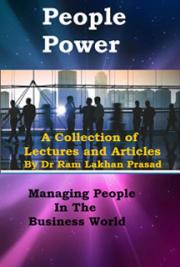Masculinities
in
conflict
in
Casamance
By
Tomas
Serna
Salichs
Abstract
This
paper
proposes
an
engendered
picture
of
one
of
the
oldest
low
intensity
conflicts
in
Africa,
the
conflict
in
Casamance.
Reflecting
on
how
gender
affects
the
conflict
and
how
gender
has
been
affected
by
the
conflict
this
paper
search
for
opportunities
to
be
explored
for
current
peace
initiatives
that
focus
on
the
combatants.
Introduction
The
conflict
in
Casamance,
Senegal,
is
one
of
the
oldest
low
intensity
conflicts
in
the
continent.
Atika,
the
armed
wing
of
the
MFDC,
Movement
of
democratic
forces
of
Casamance,
claims
the
independence
of
this
territory
between
the
Gambia
and
Guinea
Bissau.
After
several
contradictions,
internal
and
external
conflicts
its
forces
fragmented1.
Today
one
of
the
main
wings
of
Atika
is
based
in
the
Guinea
Bissau
border
under
commandment
of
Cesar
Atout
Badiate,
a
Christian
/
Animist
Diola
from
Oussouye
district.
The
other,
based
in
the
Gambia
border,
is
under
the
commandment
of
Salif
Sadio,
Muslim
Diola
from
the
Fogny
zone.
Both
are
reliant
of
external
direct
or
indirect
support,
the
one
from
Bissau
allegiances,
and
the
second
from
Banjul
loyalties.
President
Abdoulaye
Wade
administration
from
2000
to
2012
failed
to
install
a
definitive
peace
process.
The
Peace
agreement
signed
in
2004
only
permitted
to
comply
with
donor
exigencies
in
order
to
get
funding
for
development
and
reconstruction
(Marut).
Combats
between
independentist
and
Senegalese
troops
kept
1
In
2006
the
Guinean
army
engaged
several
“clean
up”
military
operations
close
to
the
border
resulting
in
the
defeat
of
Salif
Sadio,
one
of
MFDC-‐Atika
commanders
who
escaped
capture
under
intense
fighting
through
the
Senegalese
lines
and
arrived
to
the
Gambian
border.
The
tacit
support
of
the
moderate
MFDC-‐Atika
wing
under
commandment
of
Cesar
Atout
Badiate
consolidated
their
internal
discrepancy.
In
2009
during
the
failure
of
the
attack
to
Ziguinchor,
the
main
Casamancese
city,
by
Cesar
A.
Badiate
a
new
group
separated
under
commandment
of
Niantang.
Since
then
the
conflict
has
entered
in
a
relatively
lower
intensity
phase
1
on.
After
Wades
defeat,
the
new
administration
of
President
Macky
Sall
(April
2012)
opened
room
for
international
negotiations
as
an
alternative
of
considering
the
question
as
a
domestic
problem,
and
sat
up
a
major
procedural
improvement
to
assemble
a
definite
peace
process.
The
purpose
of
this
paper
is
to
analyze
how
gender
has
been
affected
by
this
conflict
and
to
search
for
opportunities
to
be
explored
for
current
peace
initiatives.
We
are
not
pretending
to
study
the
conflict
as
such
in
its
protracted
dimensions
(Pugh),
but
proposing
a
focus
in
topics
related
to
the
combatants,
that
is,
the
armed
movement.
Scholar’s
discussions
if
the
Casamancese
independent
political
movement
is
historically
an
ethnic
movement,
where
Diola
people
play
a
centered
role,
or
not
are
copious.
We
are
not
entering
in
this
discussion,
but
we
are
considering
the
fact
that
the
Casamancese
MFDC
Atika
armed
forces
belong
in
its
majority
to
the
Diola
groups.
The
first
part
of
the
paper
will
interrogate
about
patriarchy
in
Diola
culture.
Albeit
we
are
aware
of
the
specificities
of
other
Diola
groups,
we
will
consider
here
that
there
is
a
major
strong
cultural
break
between
the
Animist
and
Christian
Diola,
whose
majority
are
in
the
left
side
of
the
river:
that
is,
the
Floup
(Oussouye),
Diamat
(Youtou,
Effoc),
Dyiwat
(Djembereng),
Her
(Kabrousse),
Brin
(Bandial)
and
Karone,
and
the
Muslim
Diola,
that
is,
the
Diola
Fogny2
whose
majority
is
particularly
influenced
by
the
Mandingo
cultural
colonization
during
the
end
of
the
XIX
siècle
of
the
right
side
of
the
river
Casamance.
Although
there
is
room
for
discussion
in
this
topic
we
here
consider
that
Christians
Diola
are
culturally
closer
to
Aninimists
and
share
their
same
space.
Generally
speaking
Cesar
Atout
Badiate
MFDC-‐Atika
wing
is
leaded
by
a
majority
of
people
belonging
to
the
first
group,
while
Salif
Sadio
MFDC-‐Atika
wing
is
identified
with
the
second
group.
The
particular
role
of
women
in
the
Diola
Animist
environment
will
be
one
of
our
center
of
interest
as
well
as
how
this
role
is
different
within
the
Diola
that
have
received
the
Mandingo
and
Islam’s
cultural
influence.
We
will
analyze
how
men’s
power
over
women
is
expressed
in
two
arenas:
public
patriarchy,
or
every
thing
2
Following
Louis
Vincent
Thomas, Les
diola,
Essai
dánalyse
fonctionnelle
sur
une
population
de
basse
casamance,
IFAN
Dakar
1958
2
“referring
to
the
institutional
arrangements
of
a
society,
the
predominance
of
males
in
all
power
positions
within
the
economy
and
polity”,
and
domestic
patriarchy
referring
“to
the
emotional
and
familial
arrangements
in
a
society,
the
ways
in
which
men’s
power
in
the
public
arena
is
reproduced
at
the
level
of
private
life”3.
At
the
same
time,
we
will
have
a
particular
interest
about
how
women
relate
to
land
heritage
and
property.
Besides
we
will
think
about
masculinities
in
Casamance,
trying
as
well
to
differentiate
between
both
cultural
spaces
exploring
in
both
cases
the
model
of
masculinity
against
which
each
man
measures
himself.
We
will
then
analyze
how
gender
has
been
influenced
by
the
conflict
and
particularly
the
impact
of
conflict
on
men
and
masculinities.
We
will
focus
on
combatants,
men
affected
by
poverty
as
a
result
of
the
conflict,
youth
unemployment,
the
phenomenon
of
the
new
young
combatants
and
the
effects
of
disempowerment.
We
will
analyze
as
well
the
role
of
women
in
the
conflict.
Under
this
chapter
we
will
study
how
women
have
engaged
in
peace
building
and
also
why
they
have
not
reached
the
confidence
of
combatants.
By
splitting
the
two
identified
main
cultural
realities
we
expect
to
find
different
masculinities.
We
will
then
identify
hypotheses
of
action
and
opportunities
to
be
explored
for
peace
initiatives.
Patriarchy
and
masculinities
in
the
Diola
of
Casamance
The
everyday
living
of
the
Animist
Diola
is
embedded
in
culture
and
tradition.
Traditional
Diola
society
is
patriarchal:
filiation
is
masculine,
that
is,
children
take
their
fathers
name
who
is
the
chief
of
the
family,
but
the
type
of
family
life
is
strongly
maternal.
Until
our
days
the
mother’s
brother,
the
mother
and
the
sister’s
sun
constitute
the
main
triangle
of
the
Diola
society,
being
the
mother
the
central
element
(Ki
Zerbo).
The
Asampul, that
is,
all
men
from
the
mother’s
family,
have
significant
missions
like
supervising
children
education,
building
the
coffin
in
case
of
death,
digging
the
grave,
carry
the
cadaver
for
interrogation
and
bury
(Thomas).
Finally
3
Kimmel
Michael,
Global
Masculinities:
Restoration
and
Resistance,
Gender
Policy
Review
3
Diola
women,
who
keep
the
fathers
name,
have
more
authority
in
their
role
as
sister
and
mother
than
in
their
role
as
wife.
Even
if
their
position
is
significant,
Diola
women
do
not
participate
in
the
transmission
of
the
land,
which
is
the
first
resource
of
the
group.
Women
don’t
have
big
responsibilities
in
the
management
and
transmission
of
the
resources
of
its
parental
original
group.
Nevertheless
they
will
ever
be
linked
to
their
original
family.
When
married,
they
bring
with
them
their
labor
force,
particularly
the
capacity
of
planting
rice
and
in
many
cases
they
are
in
charge
of
the
management
and
protection
of
the
household
granaries.
In
one
of
the
Animist
Diola
groups,
the
Bandial,
women
receive
a
part
of
their
parents
rice
fields.
Women
are
considered
as
linked
to
the
land,
the
rice
fields,
where
in
collective
working
journeys
men
labor
and
women
plant.
In
case
of
divorce
Diola
women
can
always
turn
back
home
if
they
don’t
want
to
rest
in
their
husband
family.
Widows
can
reside
on
their
husbands
family:
one
of
the
husbands
brother,
the
one
she
will
choose,
will
take
care
of
her.
In
any
case
they
can
decide
to
turn
back
home
to
her
parental
family.
Diola
women,
due
to
her
particular
functions
linked
to
the
land,
are
placed
in
a
paradox
situation
of
autonomy
/
dependence
from
her
parental
family
and
her
husband
family.
Without
participating
to
the
sharing
and
transmission
of
the
rice
fields,
they
actively
contribute
to
the
prosperity
of
their
husband
lineage.
In
a
global
societal
perspective
they
have
a
concrete
economic
and
juridical
role
in
terms
of
land
management
(Ki
Zerbo).
Furthermore
Diola
women
possess
powerful
shrines,
faired
and
respected
by
all
men,
this
representing
as
well
a
significant
dimension
of
their
particular
position.
Their
maternal
role
being
as
well
culturally
emphasized,
Diola
women
have
a
relatively
high
degree
of
personal,
social
and
economic
autonomy.
This
whole
picture
shows
a
societal
environment
characterized
by
solidarity
and
certain
horizontality,
where
the
role
manifests
the
status
through
functions
that
are
complementary
in
the
community.
4
Mandinga
peoples
invaded
the
Diola
Fogny,
situated
between
the
Gambia
border
and
the
Casamance
River,
during
difficult
wars
resulting
in
Islamisation.
In
Fogny
villages,
following
Hesselin,
“Islam
hasn’t
offered
a
new
society
model
“complete
enough”,
coherent
and
efficient
to
substitute
the
ancient
social
and
related
to
land
tenure
structures”4.
The
result
is
a
complex
system
where
the
traditional
mechanisms
are
contested
and
conflicts
arise
with
frequency.
This
new
system,
embedded
on
Islamisation,
has
particularly
affected
the
traditional
women
position,
resulting
in
improved
insecurity,
less
shared
labor
responsibilities
and
a
stronger
patriarchy.
An
important
change
experienced
by
mandingised
Diola
is
a
progressive
hierarchisation
of
the
society.
Inequalities
are
stronger
between
elders
and
young’s,
chiefs
and
clients,
and
also
between
original
families
and
immigrants
(Hesseling).
This
had
inevitable
consequences
related
to
domestic
patriarchy.
In
the
Animist
theater
masculinities
are
manifested
in
collective
demonstrations
like
agriculture
works
during
the
rice
labor,
organized
by
age
generations
groups.
Strength
and
talent
are
demonstrated
in
the
yearly
wrest
competitions
between
villages
as
well
as
during
the
traditional
Ekonkon
dancing’s
preceding
and
announcing
them.
The
religious
initiation
of
young
men,
the
bukut
and
kahat, two
similar
but
opposed
customary
rules ,
are
as
well
needed
stages.
Those
important
moments
are
determinant
for
the
affirmation
of
Diola
masculinity
and
identity;
they
are
always
lived
as
events
of
participation
and
contribution
in
the
group.
The
Diola
Fogny
experience
of
young
men
has
not
the
same
collective
background
of
agricultural
labor.
Furthermore
some
of
the
traditional
ceremonies
and
events
have
disappeared,
like
the
wrestling
or
the
bukut,
other
remain
but
its
sense
has
been
strongly
transformed
by
Islam
influences.
Diola
Fogny
masculinity
is
much
more
embedded
of
modernity,
this
meaning,
been
manifested
in
stronger
individuality.
Both
environments
nurture
the
maquis.
Combatants
of
different
origins
are
mixed
within
both
wings;
they
share
their
similarities,
and
are
confronted
with
their
contradictions.
4
HESSELING
Gerti,
La
terre,
à
qui
est-‐elle
?
Les
pratiques
foncières
en
Basse-‐Casamance, Comprendre
la
Casamance
5
Men
and
masculinities
in
conflict
in
Casamance
Combatants
are
absent
head
of
families.
Their
women
had
to
lead
the
family
and
take
care
of
the
field
works.
Depending
the
degree
of
collectivization
of
the
village,
their
suns,
the
men
in
the
husband
family
and
the
village
itself
will
take
care
of
the
household
rice
fields.
Indeed,
Fogny
women
will
probably
experiment
stronger
difficulties.
Women
being
mother
and
father
of
the
family
at
the
same
time
this
bring
strong
frustrations
and
anxiety
to
their
combatant
husbands
and
imply
more
charges
resulting
in
enhanced
poverty
in
their
brothers
and
relatives.
The
more
the
women
take
responsibility
the
more
the
position
of
men
is
challenged.
Other
damaging
impact
of
the
conflict
is
consequence
of
the
absence
of
the
father
as
protector.
The
family
is
vulnerable
to
bandits
and
girls
are
more
vulnerable
to
sexual
aggression
or
offence,
particularly
from
military
elements.
As
a
result
of
wanted
and
non-‐wanted
intercourse
with
soldiers
affected
in
Casamancese
villages,
the
number
of
under-‐aged
mothers
have
increased,
this
being
source
of
frustration
and
disturbance
for
number
of
families5.
As
a
consequence
of
the
conflict,
for
young
Diola
men
to
be
able
to
marry,
found
a
family
and
become
social
adult
after
having
being
initiated
in
bukut
or
kahat
is
becoming
a
huge
challenge.
They
face
the
scarcity
of
economic
opportunities
and
unemployment.
The
image
of
a
prosper
Senegal
enhances
their
sensation
of
exclusion.
The
difficulties
for
school
attendance
have
improved
during
the
conflict
resulting
in
significant
failures
in
secondary
school.
This
painful
situation
has
promoted
migration
and
also
encouraged
engagement
in
the
maquis.
However
for
Casamancese
young
men
migration
to
Dakar
is
challenged
by
two
major
inconvenients:
on
the
one
hand,
they
are
called
rebels
and
are
stereotyped
there,
on
the
other
hand,
they
are
confronted
to
the
fact
that
Casamancese
women
are
much
more
adapted
to
the
labor
market
than
themselves.
As
a
consequence
of
their
known
honesty
and
dedication
Diola
women
are
preferred
as
house
staff
by
medium
class
5
World
Bank, Gender
and
conflict
in
the
Casamance
Analytical
Report
6
Senegalese
and
expatriates
families
in
Dakar.
On
the
contrary
young
Diola
men
in
Dakar
are
confronted
to
economic
exploitation
or
unemployment,
and
consequently,
to
be
supported
by
their
sisters.
Consequently
one
of
the
alternatives
is
illegal
migration
to
Europe
through
adventurer
boats
to
the
Canary
Islands,
or
through
the
desert
to
Libya.
Other
alternative,
finally
the
most
sensate,
is
to
be
engaged
by
the
MFDC
Atika.
This
implies
to
adopt
a
severe
way
of
life
in
the
barracks
of
the
liberated
forests,
and
to
employ
the
capabilities
acquired
in
the
villages
since
children-‐hood,
abilities
that
are
based
in
the
traditional
heritage.
As
a
result
young
Casamancese
men
persist
at
risk
of
engaging
in
violent
conflict.
Incredibly
or
not
number
of
young
men
join
the
combatants
–themselves
disempowered-‐
as
their
only
way
to
reveal
against
disempowerment
and
frustration.
These
new
recruited
men
belong
to
a
different
generation;
a
much
more
globalised
one.
The
thirty-‐year-‐old
maquis
is
then
confronted
to
a
clash
of
generations.
Following
our
interviewees,
discipline
and
resignation
within
the
new
recruited
seem
to
be
lost
values,
and
difficult
to
inculcate.
We
have
found
some
of
the
cleavage
of
the
two
main
Diola
environments
we
have
presented
in
the
leadership
styles
of
the
two
main
big
wings
of
the
Casamancese
maquis.
Salif
Sadio
is
a
strong
leader,
known
by
his
violence
and
cruelty,
having
severely
executed
several
of
his
men.
Bearer
of
a
strong
education
he
has
a
clear
discourse,
and
a
penchant
to
use
his
personal
charm
in
media
interventions6.
He
acts
as
a
star,
a
vedette,
a
visible
uniqueness
able
to
eliminate
any
adversary
by
all
means.
In
his
maquis
his
leadership
is
unquestionable,
he
is
on
the
top
of
a
hierarchic
military
scale.
Cesar
Atout
Badiate
stile
is
quite
different.
He
is
a
commandant
of
commandants,
a
speaker
who
doesn’t
decide
without
appealing
their
men
in
conference.
His
decisions
seem
to
be
taken
in
joint
meetings.
He
is
not
eloquent,
he
has
not
the
ability
of
facing
the
media;
he
is
a
soldier.
Cesar
Atout
Badiate
has
his
own
political
wing
in
charge
of
relationships
and
declarations
remaining
in
the
maquis.
His
management
style
seems
6
From
Sud
FM
Ziguinchor
media
during
the
release
of
Senegalese
military
hostages
in
2012
7
to
imitate
the
traditional
collective
way
stressing
in
complementarities
and
horizontality.
He
states
what
has
been
stated.
Both
personalities
translate
different
masculinities,
that
is,
different
ways
against
which
each
measures
himself
as
a
man
in
the
maquis.
Women
and
the
conflict
in
Casamance
Women
are
in
the
origin
of
the
Casamancese
conflict.
The
violent
and
counterproductive
repression
by
Senegalese
authorities
of
a
pacific
women’s
protest
march
in
1982
in
Ziguinchor
points
the
beginning
of
the
armed
struggle.
Women
were
attacked,
elders
mistreated
and
holy
places
invaded.
In
Diola
culture
neither
women
nor
children
shall
be
harmed.
This
explains
the
immediate
organization
of
the
violent
reaction.
Women
have
been
since
then
involved
in
the
armed
struggle,
providing
moral
support
to
combatants
and
performing
quite
a
lot
of
tasks
from
logistics
to
rituals,
but
never
as
combatants.
Diola
women
social
position
allows
them
to
participate
in
family
decisions
whether
or
not
to
support
one
or
other
side
in
the
conflict.
This
has
contributed
to
the
fact
that
combatants
remain
socially
attached.
Women
and
children
are
the
main
victims
of
the
conflict.
Women
remain
responsible
of
their
household.
If
they
are
the
new
head
of
the
family
they
have
to
take
care
of
the
field
works.
As
relatives,
they
have
to
receive
their
refugees
and
displaced
parents
in
their
homes.
Scarci







